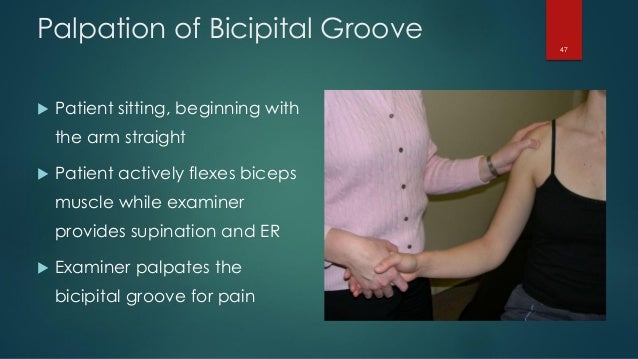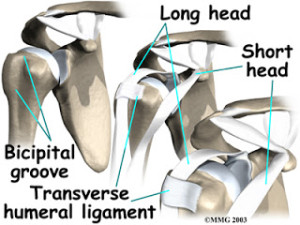Bicipital Groove Test

For the speed test the patient tries to flex the shoulder against resistance with the elbow extended and the forearm supinated9 20.
Bicipital groove test. Speed test the patient tries to flex the shoulder against resistance with the elbow extended and the forearm supinated9 20 figure 5. If any of these tests is positive it indicates that impingement is present which can lead. For the yergason test the elbow is bent at 90 degrees and the forearm is pronated turned and faced down. Resistance is placed against the forearm as it tries to turn to face up supine position.
When the therapist stops pushing down on the arm a sudden jerking motion may result. It identifies the presence of a pathology involving the biceps tendon or glenoid labrum the specific positive findings to the test include. If pain is felt in the bicipital groove during this action a positive test is confirmed and suggests a tear to the long head of the biceps. The test is positive if bicipital groove pain is present.
The test is positive if bicipital groove pain is present. A positive test is indicative of biceps tendon instability or tendonitis. This test is used to check the ability of the transverse humeral ligament to hold the biceps tendon in the bicipital groove 1 patient sits while examiner stands in front. Tenderness on palpation of the bicipital groove also indicates bicipital tendinitis.
Pain in the bicipital groove indicating biceps tendinitis subluxation of the long head of the biceps brachii muscle and presence of a slap tear.


















